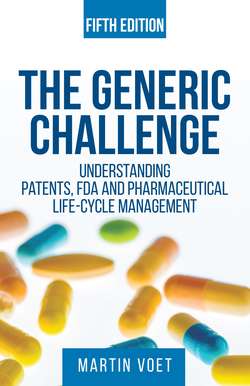Читать книгу Generic Challenge: - Martin a. Voet - Страница 11
На сайте Литреса книга снята с продажи.
ОглавлениеPreface to the Fifth Edition
The U.S. Food and Drug Administration (FDA) approved 45 new drugs in 2015 bettering the number (41) approved in 2014, which had been the highest number approved since 1996. The number of such approvals is generally considered to be a barometer of the pharmaceutical industry’s innovation and the FDA’s efficiency in reviewing and approving new therapies. While this trend is good news for industry and patients, it is likely to fuel the ongoing debate over rising prescription drug prices.
One is told that prescription drug prices are too high and annual increases are out of step, e.g., total spending on prescription drugs in the U.S. rose 12.2% from 2014 to $425 billion in 2015. But recall the admonition popularized by Mark Twain that “There were three kinds of lies: lies, damned lies and statistics”. While the foregoing statistic is true based on list prices, IMS Health estimates that manufacturers actually received $310 billion after rebates and discounts averaging 27%, only a 2.8% increase over such receipts in 2014. And IMS reports the average patient share of the cost for a brand name prescription has increased only about 25% since 2010, averaging $44 per prescription in 2015. In addition almost 90% of new prescriptions in 2015 were for generic drugs which typically cost the consumer a fraction of the cost of brand name drugs.
Spending based on list prices of the top five brand name prescription drugs in the U.S. for 2015 (in billions of dollars) were as follows:
| Gilead’s Harvoni for hepatitis C | $14.3 |
| AbbVie’s Humira for arthritis and psoriasis | $10.6 |
| Amgen’s Enbrel for arthritis and psoriasis | $6.6 |
| AstraZeneca’s Crestor for lowering cholesterol | $6.3 |
| Sanofi’s Lantus for insulin injection | $5.8 |
Note only one (Crestor) is a conventional small molecule drug (and its basic patent expired in 2016 and Crestor became a generic). All the rest are new biotech drugs. This dramatic change of leading drugs from chemically manufactured conventional small molecule drugs to biologically produced large molecule biotech drugs is the most important new trend in the pharmaceutical industry.
At the same time, the first U.S. “generic” for a biologic drug (called a “biosimilar”) was approved by FDA and launched by Novartis in September, 2015 as Zarxio, a biosimilar of Amgen’s white blood cell-boosting product Neupogen. Initial pricing was 15% below that of Neupogen. In April, 2016, FDA approved a second biosimilar Inflectra, Pfizer’s version of Janssen’s Remicade for treatment of arthritis. FDA has also accepted filings for approval of other biosimilars including a Sandoz biosimilar for Amgen’s Enbrel and an Apotex biosimilar for Amgen’s Neulasta, a long lasting version of Neupogen. Sandoz said in 2015 that it had a number of biosimilars in various stages of development and planned to make as many as 10 regulatory submissions by 2018. According to newspaper accounts there are 11 biosimilars in development to compete with AbbVie’s Humira.
The European Union (EU) is well ahead of the U.S. in approving such biosimilars, as the legal framework for approval of biosimilars was in place by 2003, vs 2010 in the U.S. As a result, there are already 19 approved biosimilars on the market in the EU for the treatment of a number of important disease conditions including diabetes, anemia, cancer, psoriasis, chronic kidney failure and rheumatoid arthritis. European biosimilars sell for about 20-30% below the list prices of the name brand versions of these biologics.
Wall Street expects U.S. biosimilars will have similar discounts once multiple biosimilars for the same product are on the market and discounts could go to 40 to 50% according to one major pharmacy chain manager. In addition, in 2015, the centers for Medicare and Medicaid Services issued new rules for biosimilars which will eliminate existing incentives for doctors to prescribe the more expensive brand name version of the drug instead of the corresponding biosimilar.
Yet despite all the recent innovations and approvals of biosimilars in the U.S., there continues to be animosity towards drug companies and calls for government price controls for drugs, exacerbated by widely published stories of a few single source generics for rare conditions having been bought by unscrupulous parties who raised prices a thousand fold for those few unfortunate users who have no alternative but to pay the exorbitant asking prices for the life-saving drugs until new generics can be approved. Hopefully, the politicians of the day will not be moved by these egregious acts to throw the baby out with the bathwater.
It is also my hope this Fifth Edition will be a useful update of the book as the laws and regulations and court decisions affecting this fascinating subject continue to evolve.
Martin A. Voet
October 1, 2016
